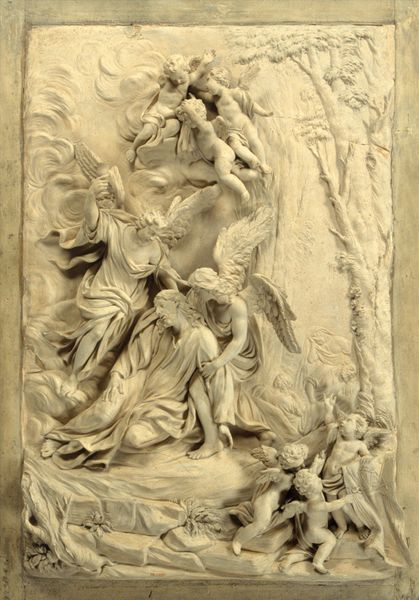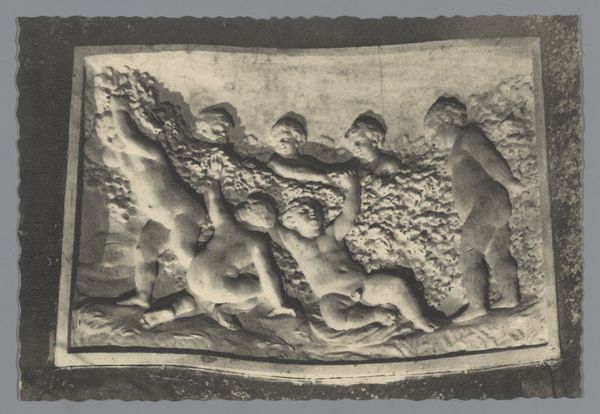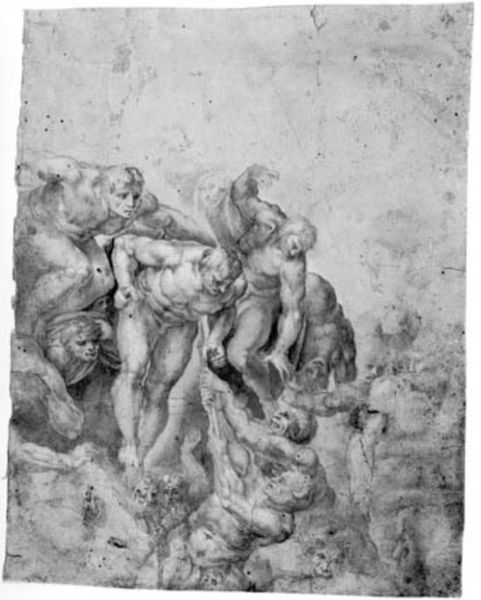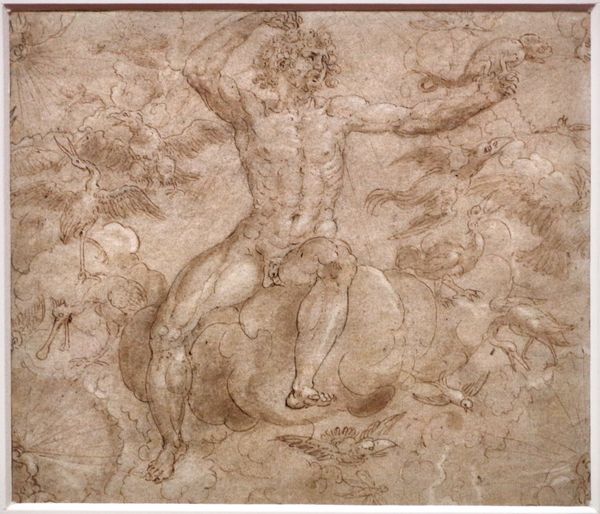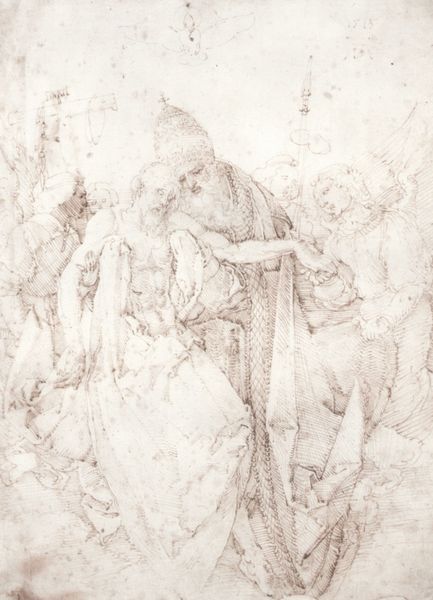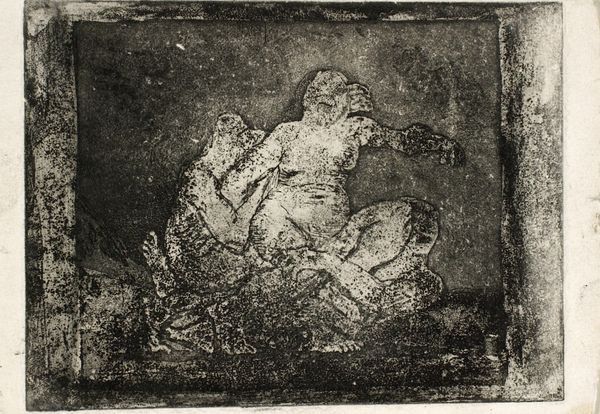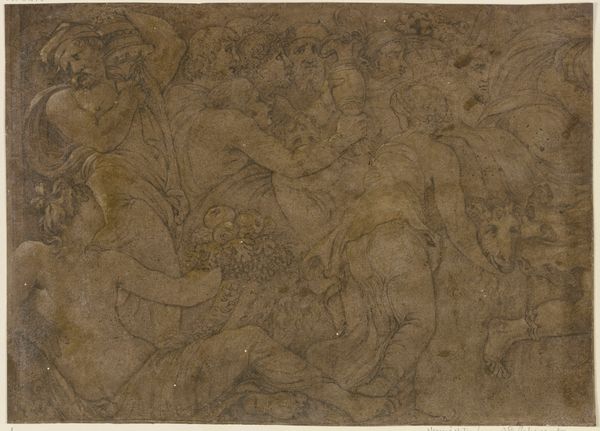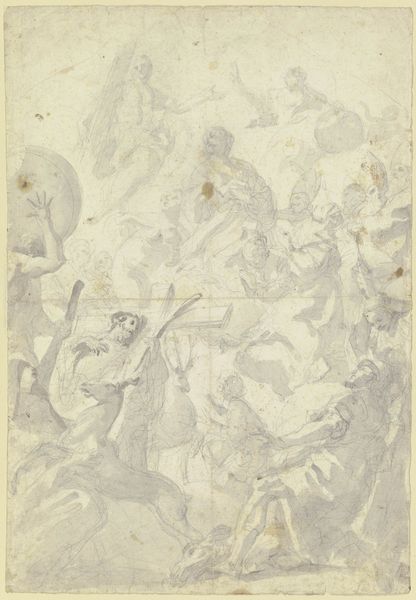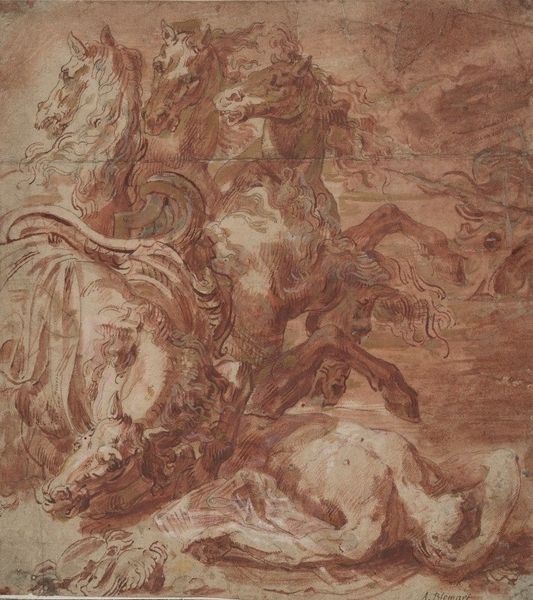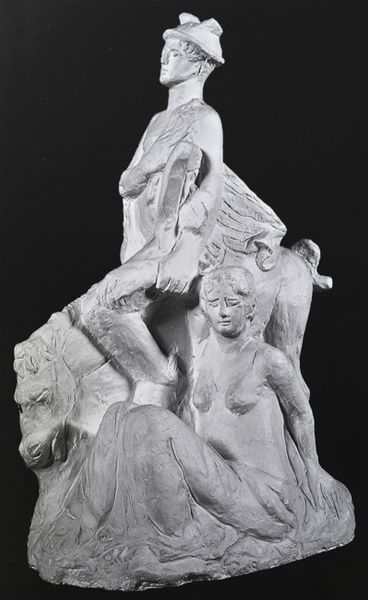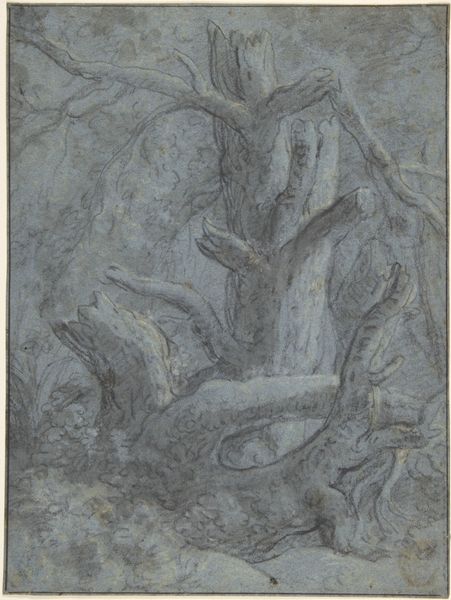
drawing, charcoal
#
drawing
#
baroque
#
pencil sketch
#
classical-realism
#
charcoal drawing
#
11_renaissance
#
charcoal art
#
underpainting
#
charcoal
#
history-painting
#
charcoal
#
nude
#
monochrome
Dimensions: 45.7 x 47.5 cm
Copyright: Public domain
Editor: This is Peter Paul Rubens's 1601 charcoal drawing, *Laocoon and His Sons*. I’m immediately struck by the intense emotion captured here, and by how the monochrome palette enhances the drama. How do you interpret this work through its symbolism and imagery? Curator: Rubens certainly understood the power of visual storytelling. The writhing figures, locked in mortal combat with serpents, tap into a deep well of cultural anxiety regarding fate and divine punishment. Consider the story itself – Laocoon, a Trojan priest, warned against bringing the Trojan Horse into the city, defying the gods. The snakes become a physical manifestation of divine wrath. Editor: So, the snakes aren’t just snakes; they represent something bigger. Curator: Precisely. They symbolize inescapable fate, a powerful force in both classical and Renaissance thought. Note how Rubens uses light and shadow to emphasize the figures' muscles and contorted faces. These details amplify their agony, linking the viewer emotionally to Laocoon’s suffering, which itself speaks to human limitations against the whims of the divine. Do you think Rubens is sympathetic towards Laocoon? Editor: It’s hard to say definitively. The drama is captivating, but it does seem to dwell on suffering. Curator: Perhaps it’s a cautionary tale. Rubens might be showing the consequences of defying what was believed to be a higher power. Either way, Rubens invokes the powerful symbols to engage in a timeless conversation about humanity’s place in the cosmos. What's your impression now? Editor: It's fascinating how loaded this seemingly simple drawing is. I hadn't considered the specific connection to divine punishment, but it makes perfect sense. Thanks! Curator: And thank you for bringing your insights! These dialogues remind us how art constantly prompts us to consider and reconsider the symbols through which we communicate across centuries.
Comments
No comments
Be the first to comment and join the conversation on the ultimate creative platform.
